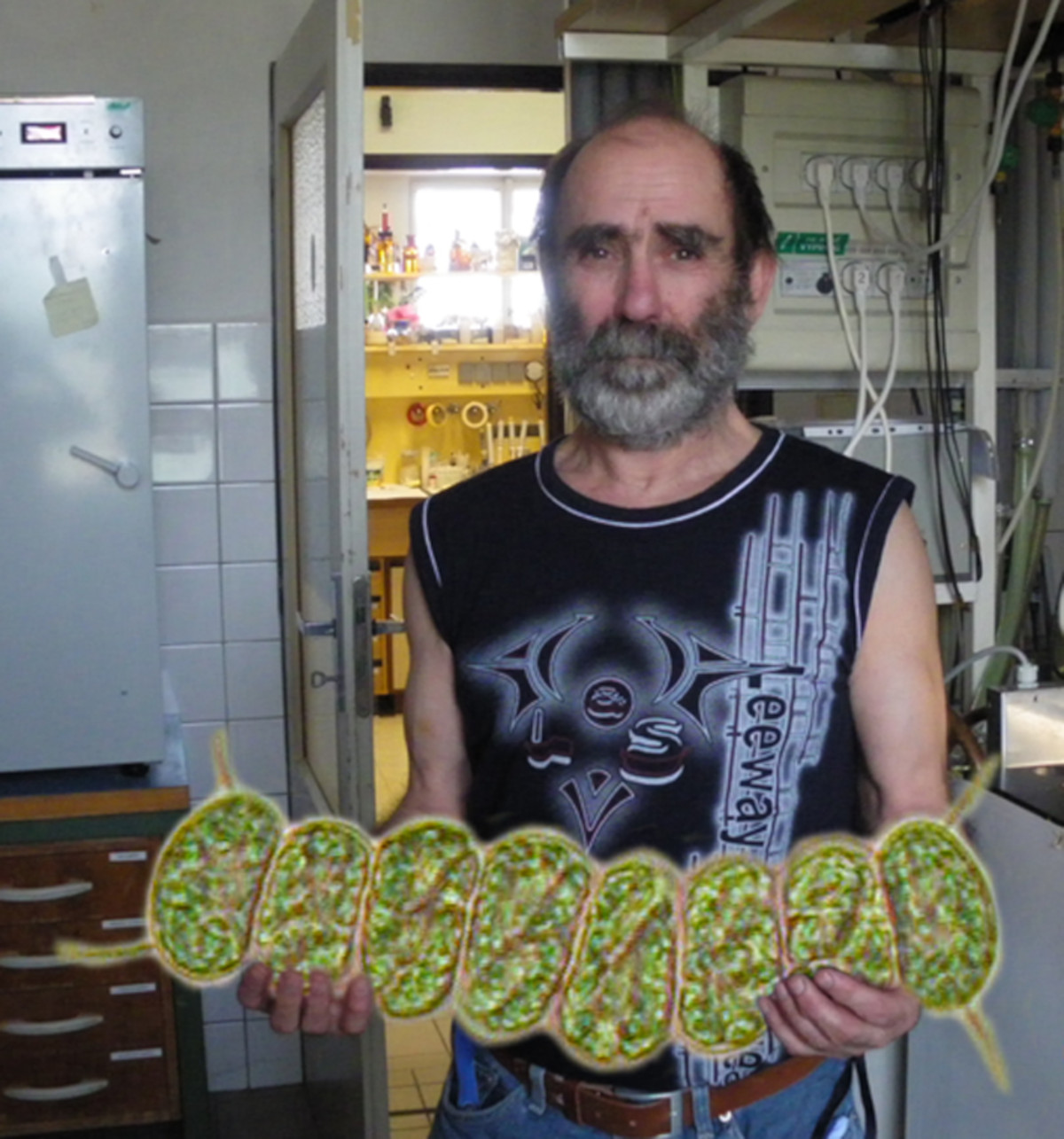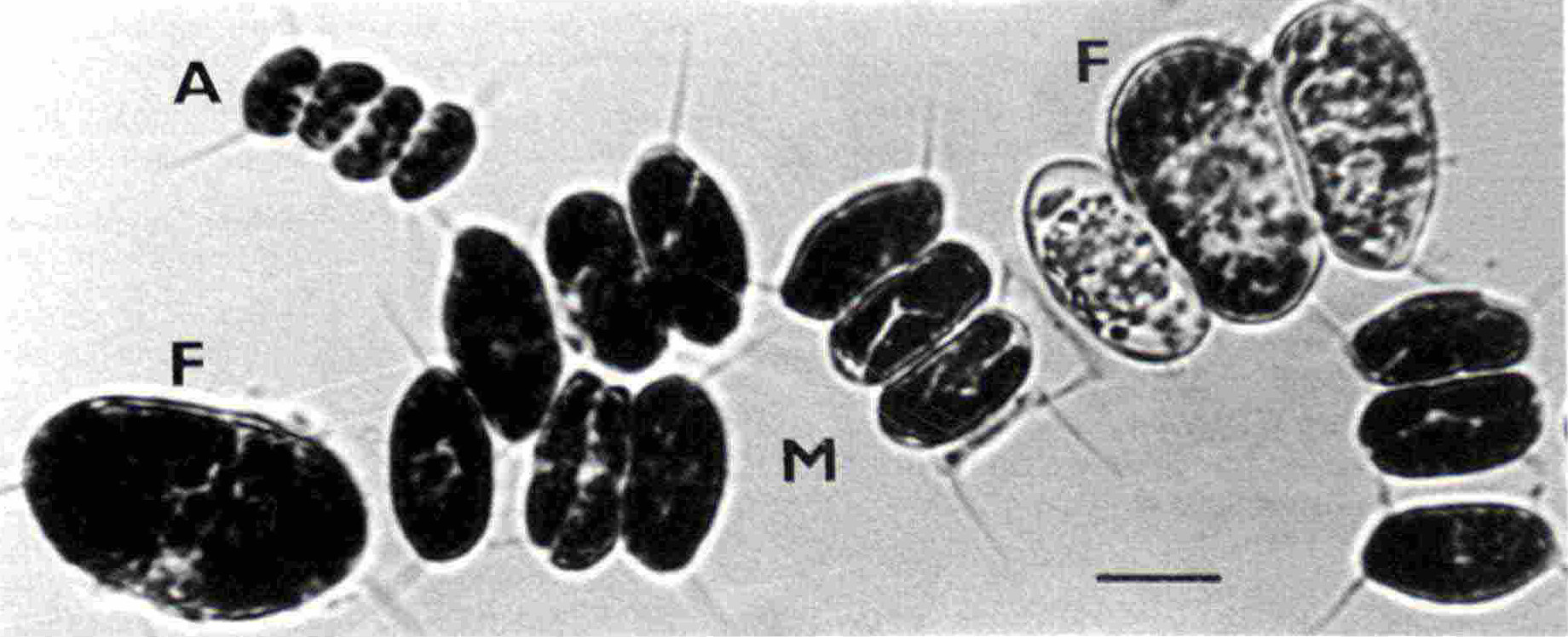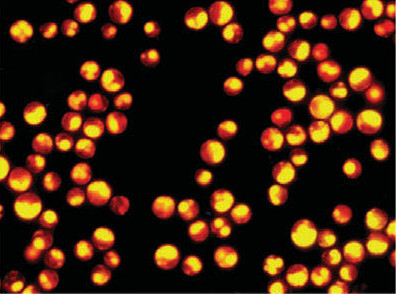Laboratory of Cell Cycles of Algae
History
 Laboratory of Cell Cycles of Algae has focused on cell cycle regulation studies in algae characterised by multiple fission for more than 50 years. The lab is inextricably linked to its founder and long-time head, Dr. Vilém Zachleder. Learn more about his captivating personality here.
Laboratory of Cell Cycles of Algae has focused on cell cycle regulation studies in algae characterised by multiple fission for more than 50 years. The lab is inextricably linked to its founder and long-time head, Dr. Vilém Zachleder. Learn more about his captivating personality here.
Over the decades, synchronized cultures, in which all cells have the same age, have been used for a variety of purposes, including the study of the effects of light intensity and illumination regimes (Šetlík et al. 1972; Šetlík et al. 1975; Šetlík and Zachleder 1984; Tukaj et al. 1996;), the effects of light colour (Oldenhof et al. 2004a; Oldenhof et al. 2004b; Oldenhof et al. 2006), the effects of nutrient deprivation (Ballin et al. 1988; Šetlík et al. 1988; Zachleder et al. 1988), effect of temperature (Šetlík et al. 1975), effect of specific inhibitors of cell cycle events (Zachleder 1994; Zachleder 1995), heavy metals (Bišová et al. 2003; Pribyl et al. 2006; Pribyl et al. 2008; Cepák et al. 2014), environmental pollutants (Zachleder and Tukaj 1993) or carcinogens (Zachleder et al. 1983; Abarzua et al. 1986).
 The main goal of these studies was to explore the timing of events in overlapping cell reproductive sequences and their mutual interactions (Zachleder and Šetlík 1988; Zachleder and Šetlík 1990; Bišová and Zachleder 2014; Zachleder et al. 2016), including the role and composition of the cytoskeleton (Hendrychová et al. 2002). We also investigated the control of mating competence by environmental conditions (Zachleder et al. 1991; Zachleder et al. 2002b) and algal reaction to DNA damage (Slaninová et al. 2003; Hlavová et al. 2011; Čížková et al. 2019). One of the long-term interests was the study of chloroplasts and their division, which was investigated since the 1980s (Šetlík and Zachleder 1984; Zachleder and Cepák 1987a, Zachleder and Cepák 1987b, Zachleder and Cepák 1987c; Cepák and Zachleder 1988; Zachleder et al. 1989, 1990; Los et al. 1990; Cepák et al. 2007; Vítová et al. 2008). Later, this research was conducted in collaboration with the research team of Professor T. Kuroiwa (University of Tokyo) and Professor S. Kawano (University of Tokyo) (Zachleder et al. 1995; Zachleder et al. 1996; Zachleder et al. 2004).
The main goal of these studies was to explore the timing of events in overlapping cell reproductive sequences and their mutual interactions (Zachleder and Šetlík 1988; Zachleder and Šetlík 1990; Bišová and Zachleder 2014; Zachleder et al. 2016), including the role and composition of the cytoskeleton (Hendrychová et al. 2002). We also investigated the control of mating competence by environmental conditions (Zachleder et al. 1991; Zachleder et al. 2002b) and algal reaction to DNA damage (Slaninová et al. 2003; Hlavová et al. 2011; Čížková et al. 2019). One of the long-term interests was the study of chloroplasts and their division, which was investigated since the 1980s (Šetlík and Zachleder 1984; Zachleder and Cepák 1987a, Zachleder and Cepák 1987b, Zachleder and Cepák 1987c; Cepák and Zachleder 1988; Zachleder et al. 1989, 1990; Los et al. 1990; Cepák et al. 2007; Vítová et al. 2008). Later, this research was conducted in collaboration with the research team of Professor T. Kuroiwa (University of Tokyo) and Professor S. Kawano (University of Tokyo) (Zachleder et al. 1995; Zachleder et al. 1996; Zachleder et al. 2004).
 In the last 20 years, we have been interested in the effect of selenium (Umysová et al. 2009; Doucha et al. 2009; Brányiková et al. 2010; Vítová et al. 2011; Vítová et al. 2015) and rare earth elements (Goecke et al. 2015; Goecke et al. 2015; Řezanka et al. 2016; Goecke et al. 2017) on green algae. We have also used our knowledge of algal physiology to produce algae rich in starch (Brányiková et al. 2008; Brányiková et al. 2009; Maršálková et al. 2010; Brányiková et al. 2011; Zachleder and Brányiková 2013), neutral lipids (Přibyl et al. 2012a; Přibyl et al. 2012b; Li et al. 2013; Přibyl et al. 2013; Ota et al. 2016a; Ota et al. 2016b or their combination (Mizuno et al. 2012; Fernandes et al. 2013; Procházková et al. 2013; Takeshita et al. 2014). Furthermore, we verified the algal capacity to utilize different forms of waste carbon dioxide (Brányiková et al. 2010; Kaštánek et al. 2010) and to produce starch and neutral lipids in pilot scale (Schreiber et al. 2017; Takeshita et al. 2018). Some of the topics, such as the effect of light (Vítová et al. 2011a) and temperature (Vítová et al. 2011b) on algal growth and division, have been of long-term and sustained interest to us.
In the last 20 years, we have been interested in the effect of selenium (Umysová et al. 2009; Doucha et al. 2009; Brányiková et al. 2010; Vítová et al. 2011; Vítová et al. 2015) and rare earth elements (Goecke et al. 2015; Goecke et al. 2015; Řezanka et al. 2016; Goecke et al. 2017) on green algae. We have also used our knowledge of algal physiology to produce algae rich in starch (Brányiková et al. 2008; Brányiková et al. 2009; Maršálková et al. 2010; Brányiková et al. 2011; Zachleder and Brányiková 2013), neutral lipids (Přibyl et al. 2012a; Přibyl et al. 2012b; Li et al. 2013; Přibyl et al. 2013; Ota et al. 2016a; Ota et al. 2016b or their combination (Mizuno et al. 2012; Fernandes et al. 2013; Procházková et al. 2013; Takeshita et al. 2014). Furthermore, we verified the algal capacity to utilize different forms of waste carbon dioxide (Brányiková et al. 2010; Kaštánek et al. 2010) and to produce starch and neutral lipids in pilot scale (Schreiber et al. 2017; Takeshita et al. 2018). Some of the topics, such as the effect of light (Vítová et al. 2011a) and temperature (Vítová et al. 2011b) on algal growth and division, have been of long-term and sustained interest to us.
We will revisit other topics, such as the coordination of chloroplast and cell cycles, using currently available methods.